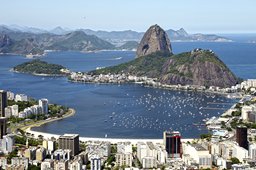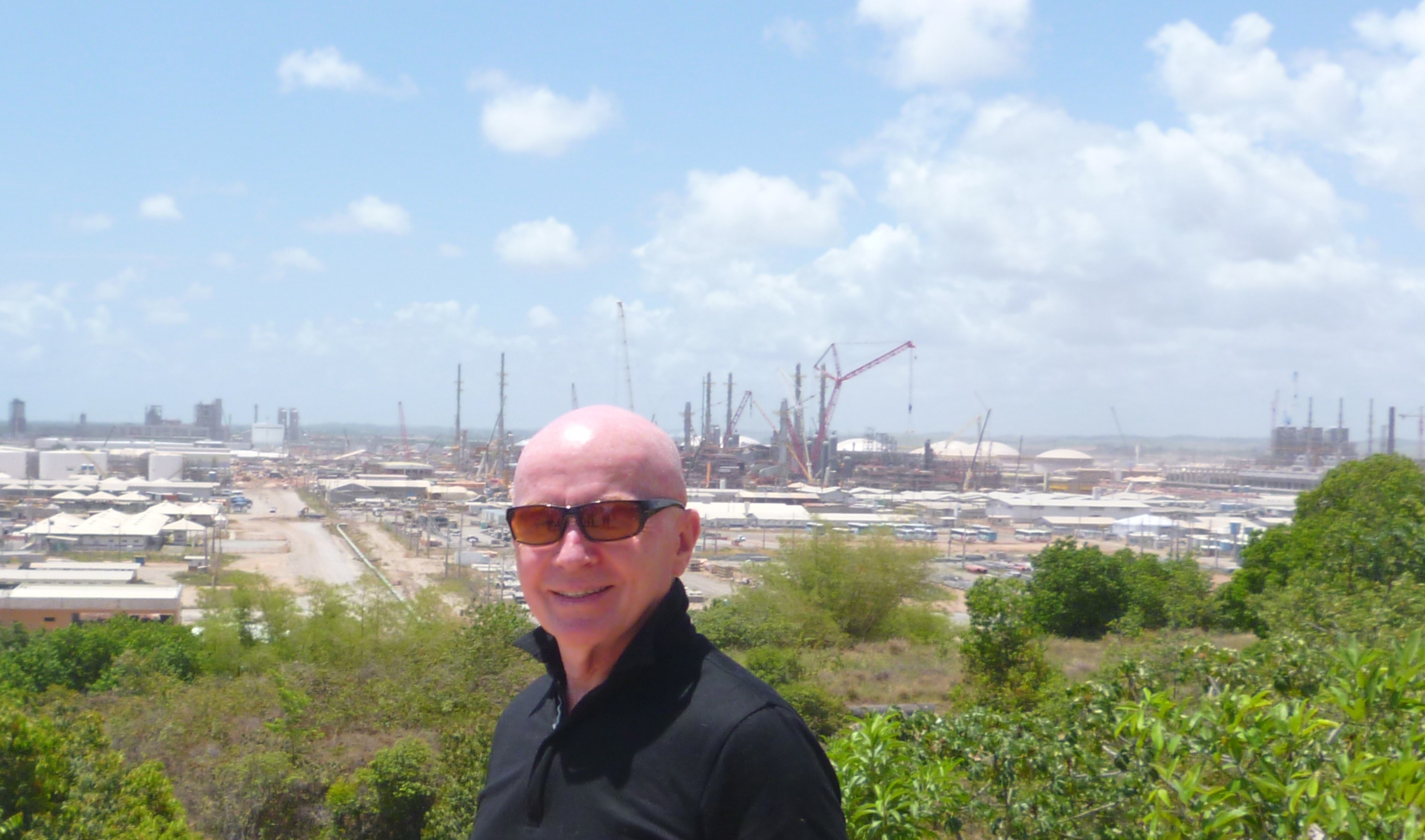By Mark Mobius, Franklin Templeton Blog,
Brazil has been on a spending spree during the past few years, which, unfortunately, has failed to generate meaningful growth and has led to negative economic consequences. In addition to the lavish spending in preparation for the FIFA World Cup™ this summer and the Olympic Games in 2016, Brazil’s national oil company has been spending billions of dollars on expensive offshore oil exploration, production and energy development. Resources have also been pumped into other enormous projects including a major petrochemical plant, as well as various social programs to benefit the lower-income population. Brazil clearly faces some headwinds, but we believe meaningful reform efforts that open up investment to the private sector could help the country get back on a more positive track and take some pressure off government resources.
Brazil’s situation has become so critical that ratings agency Standard & Poor’s recently downgraded the country’s credit rating from BBB to BBB-, the lowest investment-grade rung, expressing the deterioration in the government’s fiscal position and a lack of confidence in its economic management. The announcement seems to have put more pressure on Brazil’s government to get its fiscal house in order. After the downgrade, Brazil’s tax department announced the government was considering increasing taxes to remedy lower-than-expected tax revenues.
In February, Brazil’s minister of finance, Guido Mantega, had promised to cut public expenditures by US$18 billion during the year. However, he provided little detail about how he intended to do so. Most observers (including us) think that cutting government spending would be difficult if not impossible in the near term, given the looming presidential election in October.
Brazil’s economic growth (2.3% in 2013 and the same is forecast for 20141) is not fast enough to generate sufficient capital to meet the infrastructure and social service needs of its young population. Government-controlled banks have been lending at a fast pace, but a good deal of it is not prudent, in our opinion, and could result in rising non-performing loans. Some observers believe the government might be required to inject more capital into those banks. This, of course, could lead to higher government debt-to-GDP ratios.
Reform is critical, but it has been too slow since the political decision-making process in Brazil requires broad consensus and a lot of time for negotiations, in our view. Some reforms require amendments to Brazil’s constitution, and this needs two votes by full majorities of each of the houses of Congress, which are not easy to obtain given the wide differences between various interest groups coming from this vast country.
The Pendulum of Popular Opinion
In 2013, demonstrations in a number of Brazilian cities targeted bus tariff increases, corruption and poor infrastructure. Until then, Brazil’s government had enjoyed high popularity because of low unemployment levels and a number of populist programs. At the beginning of 2013, President Dilma Rousseff’s approval ratings were high at about 70%, but dropped to 30% by the end of that year. Despite the popularity decline, a divided opposition could split the difference and hand Rousseff a reelection victory in October.
Given Brazil’s rising government indebtedness, money is needed from the private sector to develop the country’s infrastructure. Current plans call for a large number of private sector concessions to be granted for highways, railways, international airports and other services. The 2016 Olympics is forcing the government to move faster. Airport management and upgrading is urgently needed to accommodate millions of expected travelers. In late 2013, I was happy to hear that the management of the inefficient Rio de Janeiro airport was to be turned over to a Singapore-based company. Other such contracts and concessions have been granted in other areas.
Carnival—Brazil’s Housing Crunch
My team and I traveled to Brazil in early March and our first destination was Rio de Janeiro, the magnet for millions of people during Carnival, a celebration ahead of the Christian season of Lent. While many locals leave the city to get away from the noise and traffic jams, others from all over Brazil and other parts of the world arrive for a week of fun and spectacle. The Carnival Ball at the iconic Copacabana Palace Hotel in the heart of Copacabana Beach kicks off the celebrations, which carry on into the wee hours of the morning. Then the action moves to the Sambodromo, a one-kilometer road lined with boxes and bleachers for 80,000 spectators where “schools” from various neighborhoods compete with their best floats, drummers and music in a spectacular procession. Outside on the streets of Rio in the neighborhoods all over the city, “blocks” consisting of hundreds and even thousands of celebrants gather to drink and dance to the music of their own samba bands. Of course, this results in lots of crowded streets and noise with the city’s cleanup crews in their bright orange coveralls and big brooms working round the clock to clean up the mess. Since many of them feel underpaid, their unions feel Carnival is an opportune time to demand higher wages, which is what we witnessed in one district where a large crew sat down on the job. Fortunately, the dispute was settled with city officials, with what I understand in that case, resulted in higher wage promises.
While driving on the beach road street in Ipanema, where the famous “Girl from Ipanema” song originated, I could see the slums (favelas) rising up the mountainsides overlooking the beach. I turned to my taxi driver and commented that the people living in those shacks on the mountainside had a terrific view, and that it was a shame so many lacked legal ownership of the land. If they did, they could improve their lot in life and with property prices on the rise, even sell the land for a nice sum someday. I was delighted when he told me a government program to give legal title to people inhabiting the favelas was seeing some progress.
I think the ownership program is very important, as granting legal title can also unlock capital to improve the favela inhabitants’ houses and neighborhoods. Several media reports indicate that more than 100,000, or about 23% of the homes in Rio’s favela communities, are in the process of receiving legal ownership titles.2 The process is complicated and involves a number of government departments, but there is hope, and newspaper reports in Brazil share the dreams of favela residents hoping to one day become legal homeowners. Generally in Rio, property prices have been exploding and housing costs have doubled in some cases over the last three years. Property deeds not only allow title to an asset that could increase in value, but also enable residents to have an address recognized by the courts and by banks, which can help secure credit.
In addition, crime in the favelas is now being tackled, and it is coming down. Police have been establishing stations in the favelas instead of just making periodic raids on drug and gun dealers there, and the new program has made residing there safer.
Related to what is happening in Rio’s favelas is the government’s “Minha Casa, Minha Vida” (“My House, My Life”) program announced in 2009. The program has been touted as a means to provide housing for millions of families who would not have access to it otherwise. It’s estimated that seven million families are living in sub-optimal living conditions, and the goal was to build one million new homes for them by 2016. That goal, having already been reached, has since been expanded, with a lofty price tag in the tens of billions of dollars. The governmental bank, Caixa Econômica Federal, directly controlled by the Ministry of Finance, is granting low- interest loans to land title owners and a large portion are in the favelas.
Additionally, the program includes a number of private sector firms that are working to meet the nation’s housing needs. We met the executive of one company that operates in every stage of a typical low-cost housing development, including land acquisition, development, construction and sales. In all cities in which the firm operates, it offers two products directed to low-income customers: units between 40 square meters and 55 square meters of usable area and a sales price of less than $100,000 Brazilian reals (Rs) (about US$45,000 – US$46,000), and another offering of units ranging from 42 square meters and 70 square meters of usable area and prices ranging between R$70,000 and R$140,000 (or about US$32,000–US$64,000). The demand is strong, and management believed that Brazilian companies produced much less than the market could absorb.
Another housing developer we visited was involved in a wide variety of completed and sold housing segments mostly targeted at the upper middle- and upper-income customers, but it has started moving more aggressively into the market for affordable entry-level housing. Overall, we were encouraged by the expansion of housing projects in Brazil.
Of course, purchasing a home typically requires financing. There is a concern that the rise of mortgages, particularly through government bank financing, could become a burden for some families. Household debt in Brazil is currently above 40% of income; mortgages currently represent about a third of that debt3 but that percentage is increasing as a result of government-sponsored programs.
As investors in Brazil, we are stepping back and looking at the long-term prospects for the country and have focused more on the consumer story than the political one. We believe that many consumer-oriented companies could continue to do well on an individual basis, which makes bottom-up analysis and active management critical, in our view. The housing sector in Brazil is just one example.
We do recognize Brazil’s current challenges, and the concern that Brazil could even be headed for recession, which would put consumer spending and capital expenditure at risk. If Brazil’s government increases taxes amid a vulnerable economic and social situation, it could add to the strain. We are hopeful that the many positive resources and the potential we believe Brazil has will come back to the fore, and that upcoming prominent sporting events will aid even more in kick-starting reforms, investment spending and growth there.
Dr. Mobius’ comments, opinions and analyses are for informational purposes only and should not be considered individual investment advice or a recommendation to invest in any security or to adopt any investment strategy. Because market and economic conditions are subject to rapid change, comments, opinions and analyses are rendered as of the date of the posting and may change without notice. This material is not intended as a complete analysis of every material fact regarding any country, region, market, industry, investment or strategy.
All investments involve risks, including possible loss of principal. Foreign securities involve special risks, including currency fluctuations and economic and political uncertainties. Investments in emerging markets, of which frontier markets are a subset, involve heightened risks related to the same factors, in addition to those associated with these markets’ smaller size, lesser liquidity and lack of established legal, political, business and social frameworks to support securities markets. Because these frameworks are typically even less developed in frontier markets, as well as various factors including the increased potential for extreme price volatility, illiquidity, trade barriers and exchange controls, the risks associated with emerging markets are magnified in frontier markets.
Tags: big picture on brazil, BRAZIL, brazil affordable housing project, brazil fiscal spending, brazil housing needs, brazil infrastructure spending, brazil macroeconomics, brazil offshore oil projects, brazil olympics 2016 spending, brazil rail highway airport projects, brazil social policy spending, brazilian investment opportunities, emerging market consumer spending, homes in Rio’s favela communities to receive legal ownership titles, housing sector in brazil, Minha Casa Minha Vida, My House My Life program, rio de janeiro, rio de janeiro airport, rio favela property rights, rio favelas, world cup 2014 infrastructure spending
 Oxstones Investment Club™
Oxstones Investment Club™
